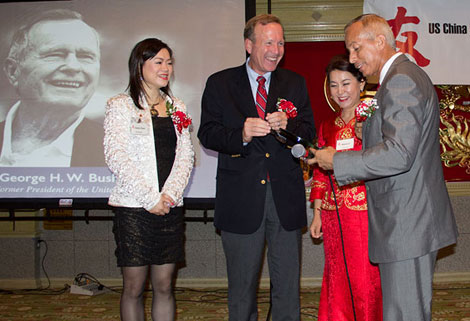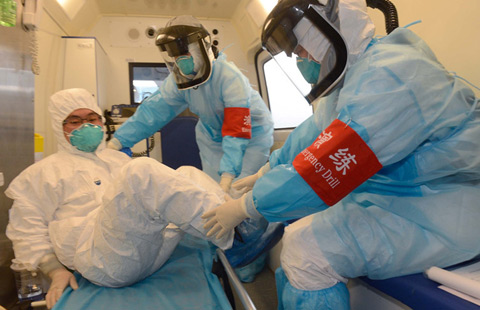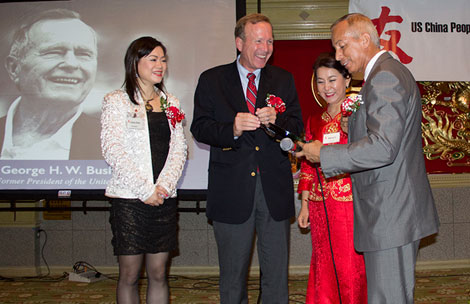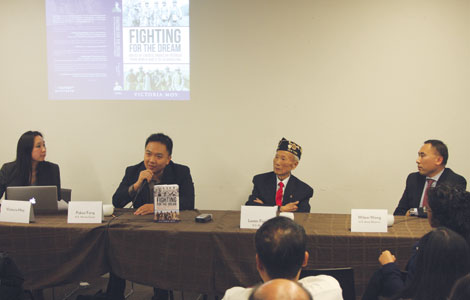APEC sketches out roadmap for FTAAP
Updated: 2014-11-08 21:32
(Xinhua)
|
||||||||
BEIJING - A historic roadmap for the Free Trade Area of the Asia-Pacific (FTAAP) has been sketched out at the ongoing Asia-Pacific Economic Cooperation (APEC) meetings in Beijing.
Ministers of the APEC members agreed to "launch and comprehensively and systemically push forward the FTAAP process," China's Commerce Minister Gao Hucheng said at a press conference on Saturday.
Officials at the two-day APEC Ministerial Meeting reached consensus on the Beijing Roadmap for APEC to push forward the process.
The ministers also agreed to try to formulate the post-Bali work program and take substantial actions for strengthening regional economic integration and advancing the FTAAP building, Gao said.
When established, the FTAAP would be one of the largest FTA in the world, covering about half of global economy and trade.
FTAAP is high on the agenda at the on-going APEC meetings in Beijing, as it will create enormous benefits for the region and the world.
A report of the Pacific Economic Cooperation Council (PECC) annual survey said on Friday that the FTAAP can unleash much greater economic vigor than other regional trade arrangements, and, if completed, will add an estimated 2.4 trillion U.S. dollars of output to the global economy.
A collective and strategic study on the FTAAP, an idea first proposed in 2004, would also be launched to create favorable conditions and lay solid foundations for establishing the FTA, Gao said.
The roadmap will be submitted to the upcoming APEC Economic Leaders' Meeting for approval, scheduled for Nov. 10-11.
Minister Gao hailed the roadmap, which defines the guiding principles and action rules for advancing the FTAAP process, as "a landmark document in the history of APEC."
The news should be welcomed by companies in the region as they are puzzled by divergent rules and standards in a number of free trade agreements, said Zhang Yunling, a veteran APEC researcher at the Chinese Academy of Social Sciences.
"I believe the FTAAP process will be substantially launched in the APEC's 'year of China' after the roadmap is approved," Gao said.
APEC started to be an incubator for the FTAAP in 2006 when the APEC meetings that year put forward the vision for it.
In 2010, APEC Economic Leaders' Meeting agreed to accept several FTA negotiations such as "10 plus 3" and Trans-Pacific Partnership (TPP) as potential paths for setting up the FTAAP. However, no real progress had been made until the APEC Beijing meetings.
The proposing of the FTAAP initiative coincided with the 25th anniversary of APEC.
Experts expect the roadmap to be one of the key hallmarks to be left by the APEC Beijing meetings.
The launch of the collective and strategic study, the establishment of the FTA information exchange mechanism, the multi-year capability building of conducting FTA negotiations and the advancement of cooperation in the fields of services, investment and rules of origin are all basic factors of the FTAAP, according to Gao.
"It is the hope of all economies in the Asia-Pacific region that, after being incubated for many years, the FTAAP could bring about more benefits to people in the region," Gao said.
Most Viewed
Editor's Picks

|

|

|

|

|

|
Today's Top News
What's in a name? A free trip around globe
Surprise as Mexico rail contract withdrawn
UnionPay enters Suriname 'testing ground'
President Xi lends support for HK
BYD unveils new electric bus in Brazil
Rousseff faces tough economic challenges in second term
Japan urged to create good atmosphere
APEC adopts FTAAP roadmap
US Weekly

|

|















